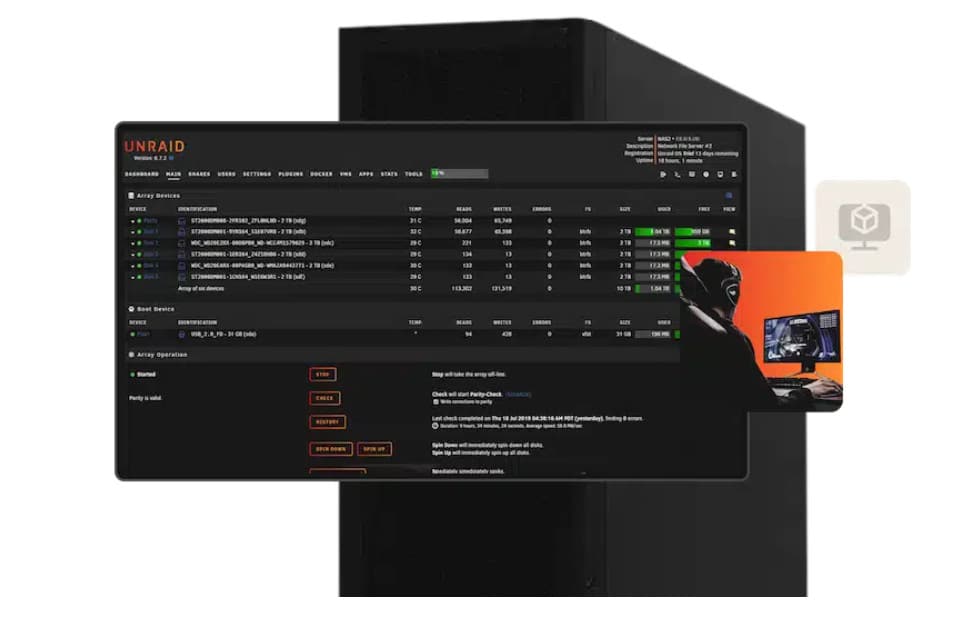When building a home server, choosing the right operating system can feel overwhelming. Many options are either too complex to set up and manage or too restricted for fine-tuning to your needs. After years of experimentation — from setting up a bare-bones, headless Ubuntu server from scratch, to trying user-friendly options like CasaOS, and even dabbling with Windows Server (What was I thinking?) — I’ve finally found the perfect Swiss Army Knife to answer this impossible question. Enter: Unraid.
What is Unraid?
Unraid is an elegant solution to the home server dilemma. It simplifies complex tasks like setting up Docker containers and virtual machines, with most setups taking mere minutes. Unraid also excels at creating and managing large storage arrays, ensuring your data remains safe even during a hard drive failure. Despite its simplicity, Unraid offers extensive fine-tuning options for power users, catering to any home server scenario — from running a personal media server to powering high-performance gaming virtual machines.
What do I Need to Start?
You don’t need much to get started with Unraid. You can always begin with a basic setup and upgrade your server over time. As long as you follow the detailed instructions in the Unraid documentation, the OS adapts well to changing hardware. My own Unraid server began with an old (like, really old) computer and some used hard drives I had lying around.
If you’ve got a computer and some storage, the next thing you’ll need is a USB drive with a GUID (Globally Unique Identifier). This GUID allows your Unraid license to be tied uniquely to the USB drive. The drive’s speed doesn’t really matter—use an older USB drive since these tend to last longer. To save you some searching, this 32 GB SanDisk Cruzer works perfectly.
An Unraid license costs around $50, with a 30-day free trial. Once you’ve gathered your hardware, follow the steps on Unraid’s Getting Started page.
Docker apps at your fingertips?
Unraid simplifies the process of setting up media or game servers with its Community Apps catalog of pre-configured Docker templates. To access the catalog, you’ll need to install the Community Applications plugin. Community apps allow you to:
- Host your own movie, show, and music streaming platform via Plex or Jellyfin
- Make your smart home even smarter via Home Assistant
- Impress your friends with self-hosted game servers via Pterodactyl
- Set up network-wide ad blocking via Pi-Hole
- Create your own devOps platform via GitTea (like GitHub)
- Run any Docker containers, including your own!
Use Unraid, anytime, anywhere.
When it comes to home servers, the question of remote access is always a concern. Two of my favorite options for secure and easy access are Cloudflared and Tailscale. Cloudflared helps you provide granular, secure access to specific containers, whether to friends or the public. Tailscale allows private, secure access to your Unraid dashboard and apps, and can turn your Unraid server into an exit node, securely routing traffic from your personal devices.
What are you waiting for?
Unraid is a Swiss Army knife home server OS — except you won’t stab yourself in the hand while trying to figure it out! Whether you want to run a media server, host game servers, or run your own Docker containers, Unraid makes it easy. You don’t need fancy hardware to start, just that old computer gathering dust and those old hard drives that your family has begged you to throw out.

